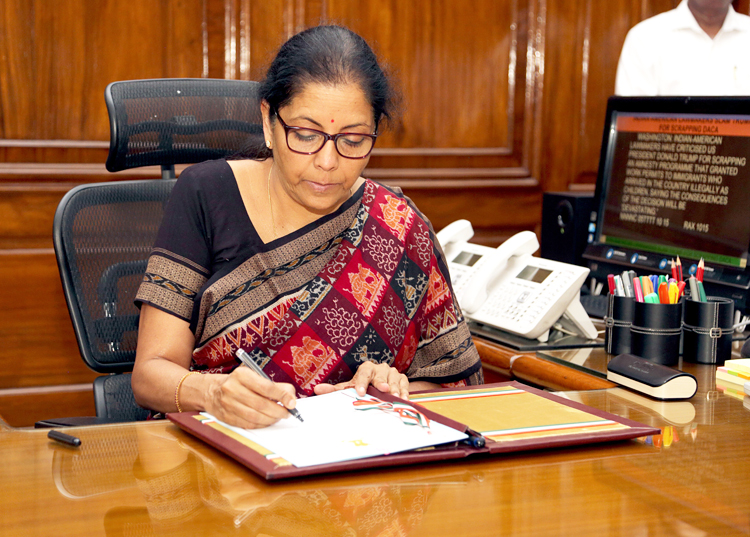INDIAN ARMED FORCES CHIEFS ON OUR RELENTLESS AND FOCUSED PUBLISHING EFFORTS

The insightful articles, inspiring narrations and analytical perspectives presented by the Editorial Team, establish an alluring connect with the reader. My compliments and best wishes to SP Guide Publications.

"Over the past 60 years, the growth of SP Guide Publications has mirrored the rising stature of Indian Navy. Its well-researched and informative magazines on Defence and Aerospace sector have served to shape an educated opinion of our military personnel, policy makers and the public alike. I wish SP's Publication team continued success, fair winds and following seas in all future endeavour!"

Since, its inception in 1964, SP Guide Publications has consistently demonstrated commitment to high-quality journalism in the aerospace and defence sectors, earning a well-deserved reputation as Asia's largest media house in this domain. I wish SP Guide Publications continued success in its pursuit of excellence.
MoD shown the mirror
 |
By Lt. General P.C. Katoch (Retd) Former Director General of Information Systems, Indian Army |

In end February 2018, public become aware that MoD for once was shown the mirror to recognize its ugly face. According to media reports, MoD had deduced internally that the much publicized ‘Make in India’ initiative is floundering, the entire weapons acquisitions process is badly broken and beset with huge delays, with only 8-10 per cent of 144 proposed deals in the last three financial years fructified within the stipulated time periods; average time taken by 133 schemes was 52 months (more than twice the laid-down time-frame) and average time taken to clear files is “120 weeks” (2.3 years) against stipulated 37 weeks laid down by the ministry in 2016. This was reportedly part of the power point presentation by Dr Subhash Bhamre, MoS (Defence) to Prime Minister Narendra Modi in end 2017.
The presentation pointed out: tendency to find faults rather than facilitate the process; entire 'Make in India' policy in the defence production sector continues to languish due procedural delays, without taking off in any concrete manner; arms procurement process dogged by multiple and diffused structures without single-point accountability, duplication of processes, avoidable redundant layers doing the same thing again and again, delayed execution, no real-time monitoring and no project-based approach. MoD contacted by media on February 28, 2018 naturally had no comments to offer because what Dr Bhambre brought out has been known for decades.
Besides talking of accountability, remember the sinking of INS ‘Sindhuratna’ with 18 sailors on board because it was running on outdated batteries while a bureaucrat sat on the file for sanctions replacement batteries available in India for 15 months? Did then Defence Minister AK Anthony take any action whatsoever against this individual? Would Dr Bhamre or Defence Minister Nirmala Sitharaman care to find out what happened to this particular bureaucrat, was he on ISI payroll to assist sinking of this submarine, and has he moved up the ladder? Getting back to Dr Bhamre’s presentation, it contended that more than a year after the new Defence Procurement Procedure (DPP) pushed for domestic defence manufacturing, acquisitions under the Buy and Make in India category still take the longest to fructify, while the least time is taken by the Buy Global category acquisitions. It said the defence procurement procedure continues to languish because of procedural delays. What Dr Bhamre may not know is that these procedural delays are ‘deliberate’, intended to create criticalities and facilitate imports for money making. That is the very reason the Buy Global Category always has smooth sailing. Sponsored media accuses Armed Forces of favouring foreign armaments but every decision for weapon / weapon-system procurement is taken by MoD. More importantly, the qualitative requirements (QR) if changed, is done ‘by MoD’ with the gun fired from the shoulder of the concerned service.
Decisions are also manipulated. For example, part of the LMGs for the three services are being procured under ‘Buy Global’ costing 1819 cr and 5,719 sniper rifles similarly are being imported at a cost of 982 cr but the more essential 7.42 lakh assault rifles are completely under Make in India, between the Ordnance Factory Board (OFB) and the private industry at a cost of 12,280 cr despite the OFB not producing a single state-of-the-art small arms past decades. Dr Bhamre’s forthright presentation rightly projected that Armed Forces continue to view MoD’s Acquisition Wing “as an obstacle rather than a facilitator” and pointed to the need for a “tectonic change” in mindset of the ministry’s officialdom, also stressing that the tendency to accept delays should be unacceptable. Why the media could not elicit any response from officials is because the presentation is a tight slap on face of the MoD with all the noise of having simplified procedures every year and despite the Prime Minister’s push for ‘Make in India’. But the question now is what beyond? Will the “tectonic change” in the mindset of MoD officials be left to their own machinations, without inducting military professionals into MoD and DRDO (military being the lone user in latter). Is the government serious about defence or merely ‘Make in India’ within the defence sector? And what about the vital need to define a national security strategy and undertaking comprehensive defence review? How about reorganization of higher defence set up including MoD, appointing the CDS, merging HQ Integrated Defence Staff (IDS) completely with MoD, replacing MoD with Department of Defence (DoD) manned majority by military professionals, merging Department of Defence Production with Ministry of Commerce and Industry, and the like. Shouldn’t DRDO concentrate purely on R&D, developing technologies for asymmetric advantage, with commercialization left to private industry? Why are we delaying privatization of defence PSUs and the OFB? Time is actually running out for India with China-Pakistan dual threat looming large on the horizon.





